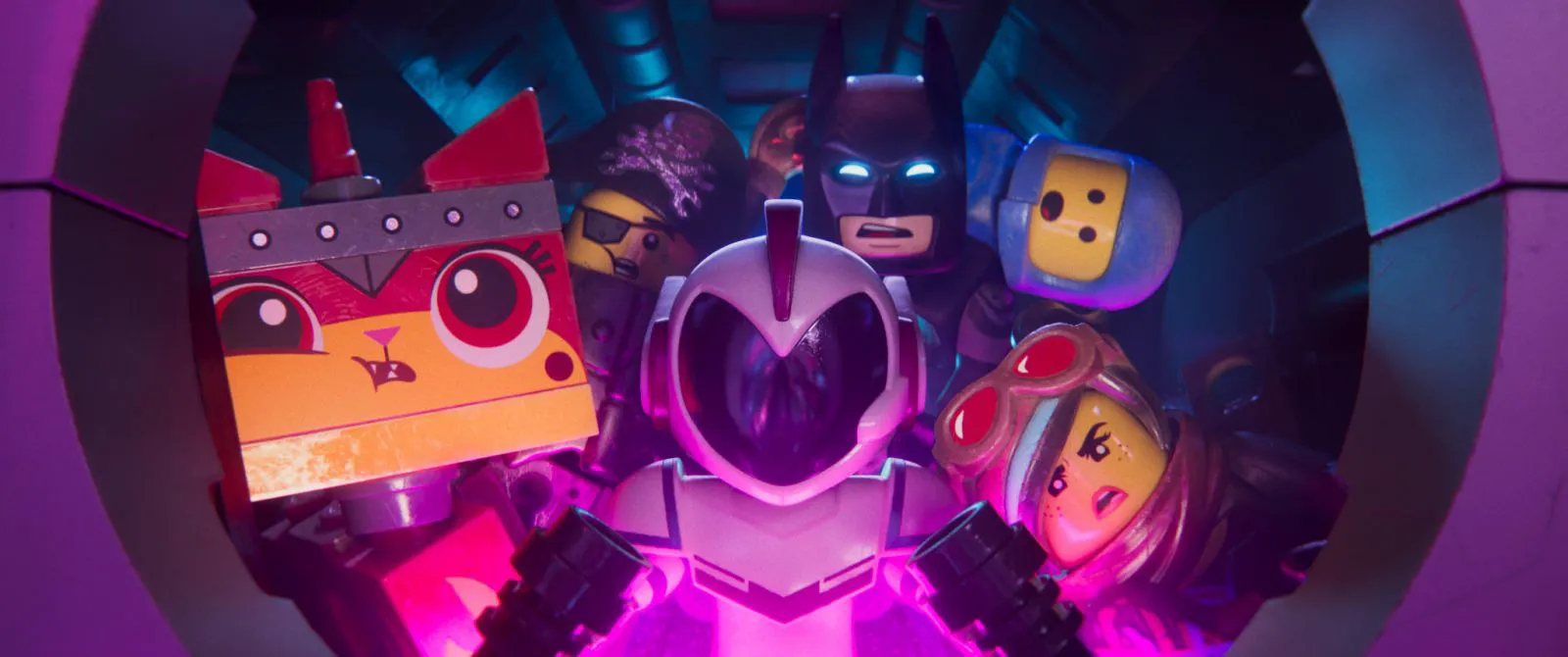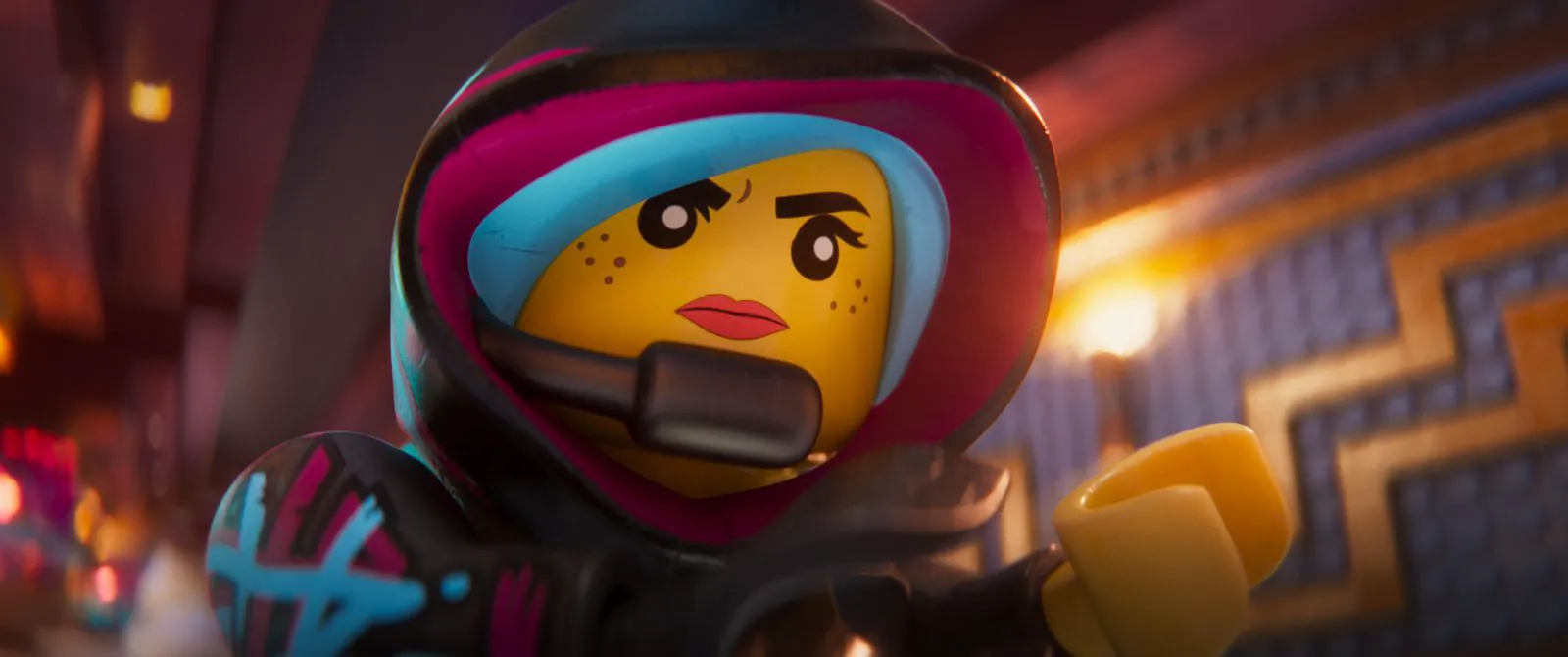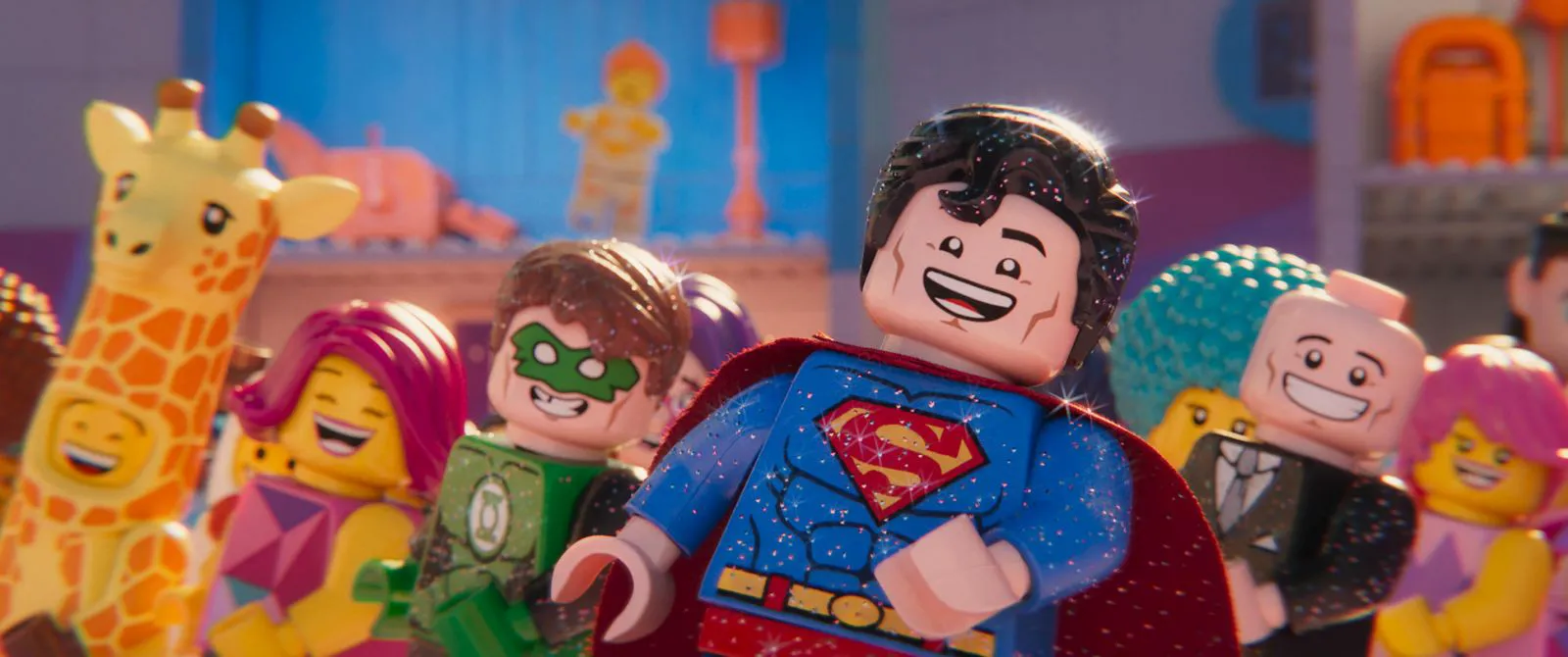The LEGO Movie 2: When Sequel Mania Meets Childlike Imagination
A continuation of the brilliant animated film that once proved even a toy commercial could be hilarious and incredibly creative.
Following the events of the first film, where the LEGO world was invaded by the villainous Duplo bricks, Emmet Brickowski and his friends find their lives transformed into a grim parody of “Mad Max.” Ruins stretch as far as the eye can see, and the remnants of the city are surrounded by a towering wall, built in anticipation of the destructive invaders’ return. However, this defense only holds for so long. Due to Emmet’s mistake, an enemy breaches the fortress and kidnaps the strongest LEGO heroes, including Batman and Lucy, taking them to the “Systar System,” a planet inhabited by girly figures. Emmet, deemed too infantile, is left behind. Determined to rescue his friends, he embarks on a journey to other worlds, where he encounters Rex Dangervest, an exaggerated action hero who agrees to help Emmet toughen up.

The LEGO franchise is a truly remarkable phenomenon. In an era of rampant consumerism and postmodernism, a series designed to sell more LEGO sets has become one of the most sincere and creative forces in global animation. “The LEGO Movie,” which had relatively low expectations five years ago (except from those familiar with its creators, Phil Lord and Chris Miller), perfectly captured the zeitgeist. Pop culture references have evolved from pleasant bonuses to a defining element, and multiverses are popping up everywhere. This obsession with references and media connections inherently resembles children playing with their favorite action figures, where Superman can fight Gandalf, or a horde of velociraptors can be crammed into a spaceship. “The LEGO Movie” simply returned to these literal origins.

The franchise has since expanded with two more (decent) films, but the original “LEGO Movie” remains a standalone masterpiece, complete and self-contained. Its cliffhanger ending felt more like another joke than a serious setup for anything. Nevertheless, a sequel was put into production, and it was fascinating to see how the ingenious Lord and Miller would approach it. They had already spoofed the very essence of sequels in “22 Jump Street,” so a different approach was clearly needed. Their answer is somewhere between utter stupidity and absolute genius: they seemed to decide that the best approach was to have no approach at all.

They assembled a writers’ room (which unexpectedly included Raphael Bob-Waksberg, the creator of “BoJack Horseman”) and brainstormed hundreds of gags about everything that came to mind. Then, without filtering or structuring them, they threw everything into the film: successful jokes alongside mediocre ones, witty jokes alongside obvious ones, gags about Abraham Lincoln and childbirth alongside awkward slapstick.

At first glance, this appears to be a classic case of sequelitis: an attempt to be bigger, better, and funnier. Did you enjoy the references in the first film? Now we’ve brought in even more stars for fleeting cameos, and one of the central characters is literally a walking meta-reference to his actor, Chris Pratt. Did you sing along to “Everything is Awesome”? Get ready for more catchy pop songs, whose catchiness and pop-ness the film will remind you of at every opportunity. Were you moved by the emotional moral message? Well, you’re in luck, because “The LEGO Movie 2” is even more eager to lecture you.

A Psychedelic Sequel?
At its worst (and sometimes at its best), it feels like a clone of the first film on some substances that shouldn’t be mentioned in a review of a children’s movie. “The LEGO Movie 2” is significantly more colorful, insane, and dynamic, even though the original was far from ascetic. Its bacchanalia of gags, references, creative ideas, and disjointed scenes, loosely stitched together into a narrative, sometimes borders on complete psychedelia, with extreme close-ups and Dutch angles reminiscent of early Peter Jackson. It’s scary, funny, and wickedly amusing. But, interestingly, all these schizophrenic tonal shifts perfectly fit into the irrational world of childhood play, which, of course, is what “The LEGO Movie 2” is primarily about.
The Heart of the Matter
The first film was about childlike spontaneity breaking through adult skepticism, which is why it managed to maintain some restraint. The second film is about embracing even greater spontaneity, a child’s creative bacchanal embodied by a younger sister seeking to destroy the last vestiges of order and meaning. In this sense, “The LEGO Movie 2” is incredibly difficult to judge. Is it a brilliant sequel that has sharply veered from “post-” to deeply “meta-,” or is it a charming, chaotic mess that we desperately want to justify? The truth, as always, lies somewhere in between.